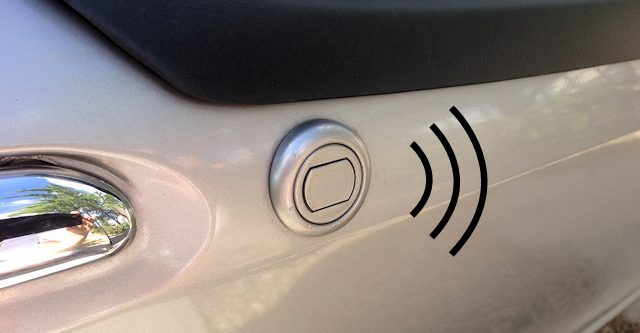
Reversing radar
Reversing radar is a system used in the automotive industry to make parking easier even when rear visibility is zero. This type of radar works on the same principle as conventional radar, but without using the same type of waves. Therefore, we should call it sonar and not radar, the explanation is just below. The 1982 Toyota Corona Corona was the first car model to use reversing radar for parking assistance.

Echo sounder, not radar!
While conventional radar uses waves electromagneticThe reverse radar is distinguished by the use ofsound waves... You should know that the wave electromagnetic actually radio waves, radio waves radiation is similar to light (a radio wave itself is light, this will surely surprise more than one). The difference is that Sound waves support is needed (water or air, it's the same ... Both are treated as liquid. They work the same way). This means that your reversing radar will not work on the moon because there is no atmosphere on it!
Reversing radar (sonar, etc.) Consists of four transmitters and sensors or more depending on the car model. It also consists of a computer and an audible warning device, which in some cases may be accompanied by a visual element.
Principle
Transmitters spread ultrasonic waves through the air (ultrasound, because we shouldn't hear them! The human ear cannot pick up sounds at frequencies that are too high). They are reflected (returned) when they encounter an obstacle, and partially return to the sending device. Then the waves reflected by the obstacle are captured by the sensors, and then the electronic control unit takes these signals into account. It then measures the reaction time (the time taken between transmitting and receiving the echo: the wave that bounced off the obstacle and which eventually returned), as well as the speed of sound propagation in the air, then calculates the distance between the vehicle and the obstacle.
Let's count ourselves
The closer you get to the obstacle, the faster the wave goes back and forth. But to understand the simplicity of the principle, let's play the role of a computer that displays the distance to the car behind:
The system sends a sound wave back and returns after 0.0057 seconds (this is very small, because the sound 350 m / s in the air). Thus, the wave made a round trip in 0.0057 secondly, I only need to take half to find out how far I am from the obstacle: 0.00285 seconds. Once I know the sound is 350 m / s and also the time the wave has traveled, I can guess the distance: 350 x 0.00285 = 0.9975... So I am in 0.99 meters approx ou 99.75 см if we want to be precise.
So the computer will use emitters and sensors to make the wave act, and then it will compute the result on its own as soon as it has the data in hand, exactly what I just did.
All comments and reactions
Dernier comment posted:
Ghiles (Date: 2019, 12:28:20)
Can we draw a reversing radar, please?
Il I. 4 reaction (s) to this comment:
(Your post will be visible under the comment after verification)
Write a comment
Do you think the PV count is a good match for the crimes committed?